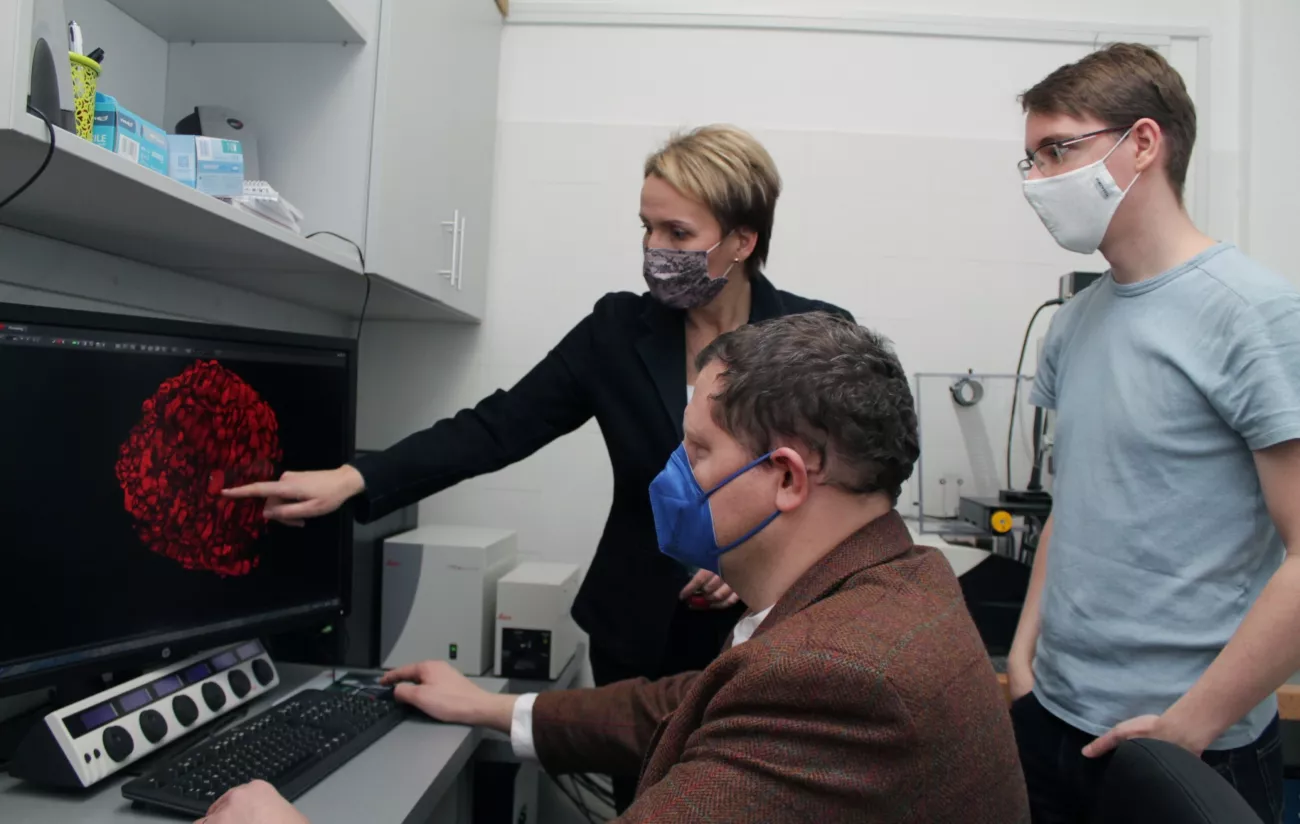The BIOMAG research group of the ELKH Biological Research Centre (BRC) is also a member of the international consortium that has created a unique database, freely accessible and continuously updatable for everyone, by processing the data of published studies using three-dimensional (3D) organ and disease models in more detail than ever before. The researchers' work is a major contribution to the standardization of spheroid-based research built on such model systems. Details of the research that led to the development of the MISpheroID database have been published in Nature Methods, one of the world's most prestigious journals.
As an alternative to traditional two-dimensional (2D) cell cultures, three-dimensional (3D) tissue and organ models have been of great interest for many years because they have been shown to better reflect the relationships in living organisms, the interactions between cells and the significance of micro-environmental effects, and thus more accurately represent the physiological or pathological processes under investigation. Today, these spheroid models are often used in research into liver, kidney, lung and immune function, as well as cancer, for example, and it is expected that 3D experiments could in time lead to breakthroughs in the development of modern, personalised drug therapies, among other things.
However, there are still many difficulties and challenges to be solved in 3D spheroid technology, mainly because experiments are not based on uniform guidelines, and the lack of standardization of spheroid models makes the conclusions drawn from such experimental studies heterogeneous. This general problem was addressed by a major international research project in which the consortium members reviewed more than 3,000 publications on the subject and verified the published results by reproducing some of the experiments.
Limited reproducibility of published experiments
It has been shown that the reproducibility of studies on spheroids is significantly compromised by the non-standard criteria used to design these types of experimental model systems. In practice, this leads to significant differences between two or more spheroid models of the same tissue or organ, depending on the experimental parameters. And if the model system is not uniform, the results of the in vitro studies conducted in this way may differ significantly, making it very difficult to evaluate and generalise the conclusions drawn and to synthesise the published results.
To overcome this methodological limitation, the MISpheroID database is designed to make it possible to retrieve all the parameters of the more than 3,000 experiments described in the processed publications. In future, this will help to more precisely design the models that best fit the scientific questions under investigation. The knowledge base also helps to make the latest experimental results available to researchers in a transparent way, organized according to a single set of principles, thus promoting research at university and academic institutions, as well as in the industrial sector.
Researchers from Szeged have already demonstrated their expertise
As the BIOMAG group, led by Dr Péter Horváth, has already achieved outstanding results in spheroid research, it plays an important role in the consortium. Last year, they published a paper on the development of a 3D spheroid-transferring robot driven by artificial intelligence algorithms. The automated microscopy system connected to the micromanipulator uses a control algorithm to perform a morphological (shape) sample selection, i.e. to select from the spheroids prepared for experiments those that are of a uniform size and/or shape, thus reducing measurement errors and discrepancies caused by sample variability. Selected and transferred to any sample holder, spheroids can be used, among other things, to perform specific therapeutic tests, making the system developed ideal for, for example, new-generation three-dimensional analysis of tumour cell cultures, even in large samples (high throughput formats).
In addition, the Szeged research group has also made significant progress in the field of imaging for the study of 3D model organisms and the IT processing of the resulting image data. For spheroids of human carcinoma (cancerous tumour) origin, they have achieved a deeper, single-cell resolution than ever before, which is essential for personalized cancer therapy to select the potentially most effective therapeutic agent(s). Their results are not only featured in prestigious international publications as Leica, a manufacturer of high-tech medical devices and microscopes, has made the 3D image database and the algorithm for evaluating the images available to users on its website, thus drawing attention to the achievements of Hungarian researchers.
It should be noted that the computational processing of single-cell image data of 3D model organisms is still a major challenge today, as the computational complexity and storage space required for processing severely limit progress, while a single-cell data set is a prerequisite for quantitative analysis of 3D models and for the operation of most image evaluation algorithms, including deep learning algorithms. A new algorithm (3D-Cell-Annotator) developed by researchers in Szeged, Hungary, can overcome these difficulties. The practical applicability of the software has been demonstrated by comparative experiments.
Directions practical use may take
The use of 3D tissue and organ models foresees major advances in personalized tumor therapy and drug research, but the standardization of methodological guidelines and experimental parameters is essential. Péter Horváth and his fellow researchers hope that the MISpheroID knowledge base will be an important step in this direction, because it will make the experimental results of researchers and laboratories around the world comparable and provide guidance for future research.
